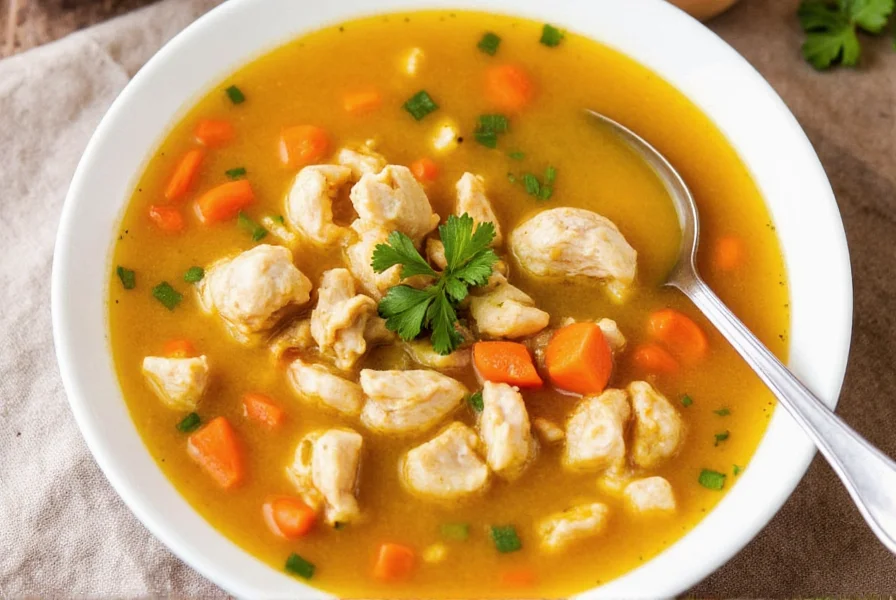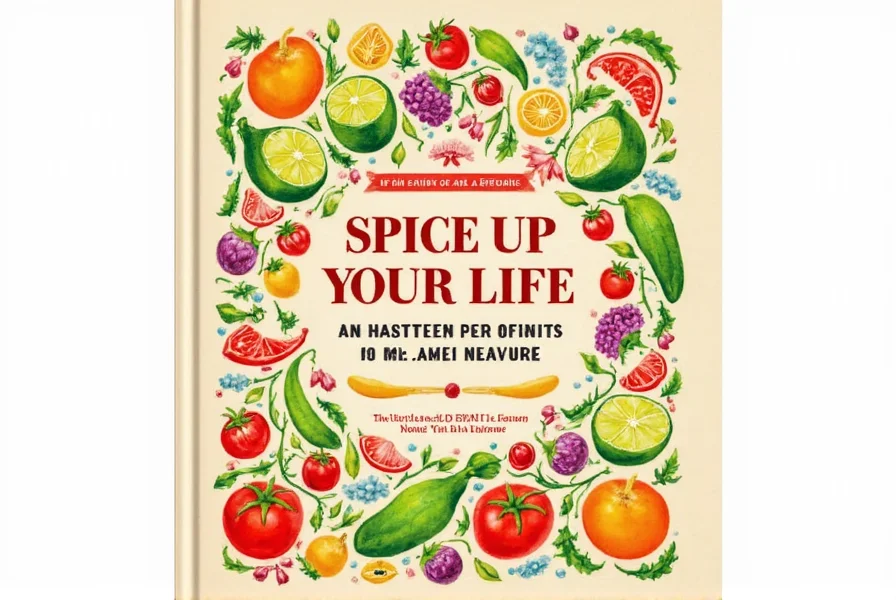Table of Contents
Introduction to Mexican Flavor
Mexican flavor refers to the distinctive combination of spices, herbs, and cooking techniques used in traditional Mexican cuisine. It's characterized by a balance of heat from chilies, smokiness from ingredients like chipotle, and bright acidity from lime and vinegar. Authentic Mexican flavor is not just about spiciness but a complex layering of flavors that vary by region. This culinary tradition has evolved over centuries, blending indigenous ingredients with Spanish influences to create one of the world's most beloved food cultures.
Whether you're preparing a simple salsa or a complex mole, understanding Mexican flavor means mastering how to balance heat, acidity, and earthy notes. In this guide, we'll explore the essential spices that form the foundation of authentic Mexican cooking, share practical techniques for using them, and provide expert advice on selecting high-quality ingredients.
Spice Basics for Beginners
If you're new to Mexican flavor, it might seem overwhelming at first. But don't worry — it's all about understanding the key players in the game. Here are some basic concepts to get you started:
- Heat Levels: Not all spiciness is created equal. From mild to extremely hot, Mexican flavors range widely depending on the type of chili used.
- Flavor Profiles: Mexican flavors often include smoky, citrusy, earthy, and sweet notes, making them incredibly versatile.
- Common Ingredients: Chili powder, cumin, garlic, oregano, and lime are just a few of the staples that define Mexican flavor.
Understanding these basics will help you build your own recipes and experiment with different combinations. It's also a great way to avoid over-spicing your food — because while Mexican flavor is bold, it should never be overwhelming.
| Spice | Description | Use Cases |
|---|---|---|
| Chipotle | Smoky, slightly sweet, and intensely flavorful. | Great for sauces, stews, and grilled meats. |
| Cumin | Earthy, nutty, and aromatic. | Used in tacos, beans, and salsas. |
| Oregano | Strong, pungent, and slightly bitter. | Perfect for pizza, soups, and marinades. |
| Garlic | Rich, savory, and umami-packed. | Essential in salsas, dressings, and rubs. |
| Coriander | Warm, citrusy, and bright. | Used in moles, curries, and seasonings. |
| Lime Juice | Tangy, acidic, and refreshing. | Perfect for balancing heat and adding brightness. |
| Paprika | Sweet, smoky, or hot, depending on the variety. | Great for rubs, stews, and sauces. |
| Tomato Paste | Concentrated, rich, and deep. | Base for salsas, soups, and stews. |
| Cayenne Pepper | Hot, sharp, and punchy. | Used in hot sauces and spice blends. |
| Black Pepper | Warm, sharp, and enhances other flavors. | Used in everything from tacos to marinades. |
These spices form the backbone of Mexican flavor, and with a little practice, you'll be able to create dishes that rival those of the pros. Just remember: a little goes a long way, especially when it comes to heat.
Cooking Tips to Master Mexican Flavor
Now that you know the basics, here are some practical tips to help you incorporate Mexican flavor into your cooking like a pro:
- Start Small: When working with spicy ingredients, always add a little at a time and taste as you go.
- Balance Heat with Acidity: Lime juice, vinegar, or even yogurt can help tone down the fire without sacrificing flavor.
- Use Fresh Herbs: Cilantro, parsley, and avocado can add freshness and texture to your dishes.
- Experiment with Smoke: Chipotle and smoked paprika are excellent for adding depth and complexity.
- Make Your Own Seasoning: Mix up your own blend of cumin, chili powder, and garlic for a personalized touch.
Mexican flavor isn't just about heat — it's about layering flavors to create something that's both exciting and satisfying. With these tips, you'll be well on your way to mastering it.
Buying Guide: Choosing the Right Spices
Choosing the right spices is crucial if you want to achieve authentic Mexican flavor. Here's a quick buying guide to help you make smart choices:
Key Features to Look For
- Freshness: Look for spices that are bright in color and have a strong aroma. Avoid old or dull-looking packages.
- Quality: Opt for organic or single-origin spices when possible. They tend to have more complex flavors.
- Variety: Don't stick to just one type of chili. Try different varieties like ancho, guajillo, and poblano to expand your flavor palette.
- Brand Reputation: Choose trusted brands known for their quality and consistency. For example, McCormick offers reliable Mexican spice blends, while Penzeys Spices specializes in high-quality single-origin ingredients.
Recommended Products
Here are a few products that are perfect for building your Mexican flavor collection:
- Chipotle in Adobo Sauce – Ideal for adding smoky heat to salsas, stews, and rubs. Look for brands like Ritas or Siete Foods for authentic options.
- Cumin Ground – A staple in any Mexican kitchen. Los Muertos offers premium Mexican cumin with rich, earthy notes.
- Chili Powder – A versatile blend that brings warmth and depth to your dishes. The Spice House provides authentic Mexican chili powder blends.
- Smoked Paprika – Adds a rich, smoky flavor to anything from roasted vegetables to grilled meats. The Spice Alley offers high-quality smoked paprika sourced directly from Spain.
Each of these products has its own unique use case, but they all contribute to that signature Mexican flavor. Whether you're cooking for yourself or hosting a dinner party, having the right spices on hand can make all the difference.

Frequently Asked Questions About Mexican Flavor
What exactly is "Mexican flavor"?
"Mexican flavor" refers to the distinctive combination of spices, chilies, and cooking techniques that characterize traditional Mexican cuisine. It's not just about heat, but rather a complex balance of smoky, earthy, citrusy, and sometimes sweet notes that create a layered flavor profile. Authentic Mexican flavor comes from using the right combination of spices like cumin, oregano, various chilies, and fresh ingredients like lime and cilantro.
What's the difference between Mexican and Tex-Mex flavors?
Traditional Mexican cuisine tends to use more complex spice blends and fresh ingredients with regional variations across Mexico. Tex-Mex is an Americanized version that often features more cheese, wheat flour tortillas, and cumin-heavy spice blends. Mexican food typically uses corn tortillas and focuses on balancing multiple chilies and spices, while Tex-Mex tends to be heavier on the cheese and has a more uniform spice profile.
Which three spices should I buy first for authentic Mexican cooking?
If you're starting your Mexican spice collection, focus on these essentials: 1) High-quality cumin (the backbone of many Mexican dishes), 2) Ancho chili powder (for its rich, slightly sweet flavor), and 3) Mexican oregano (which has a more citrusy, earthy flavor than Mediterranean oregano). With just these three, you can create a wide range of authentic-tasting dishes.
How can I reduce the heat in Mexican dishes without losing flavor?
The best way to tame heat while preserving flavor is to add acidity or dairy. A squeeze of fresh lime juice can balance spiciness beautifully. Dairy products like Mexican crema, sour cream, or even a touch of plain yogurt can neutralize capsaicin (the compound that makes chilies hot) without masking other flavors. You can also add a small amount of sugar or honey to counteract heat, or use avocado which has natural fat that helps absorb capsaicin.
How long do Mexican spices stay fresh?
Ground spices typically stay fresh for 6-12 months, while whole spices can last 1-2 years. Mexican spices like chili powder, cumin, and oregano should be stored in airtight containers away from light and heat. You'll know they've gone stale when they lose their vibrant color and strong aroma. For the best flavor, buy smaller quantities more frequently and consider grinding your own spices when possible.
Can I substitute fresh chilies for dried ones in Mexican recipes?
Yes, but with some important considerations. Fresh chilies generally have a brighter, more vegetal flavor, while dried chilies offer deeper, more concentrated, and often smokier notes. As a general rule, 1 dried chili can be substituted with 2-3 fresh chilies of the same variety. Note that some recipes specifically call for dried chilies because their unique texture and concentrated flavor are essential to the dish (like in traditional moles).
What's the secret to making authentic-tasting Mexican food at home?
The secret lies in proper technique as much as ingredients. Toast your spices briefly in a dry pan before using them to unlock their full flavor. Rehydrate dried chilies properly by soaking them in hot water (not boiling) for the right amount of time. Always balance your flavors with acidity (lime juice) and salt. And perhaps most importantly, take time to build layers of flavor rather than adding everything at once. Authentic Mexican cooking is about patience and attention to detail.
Are all Mexican dishes extremely spicy?
Actually, no. While Mexican cuisine does feature spicy elements, most traditional dishes are carefully balanced so heat is just one component of the flavor profile, not the dominant feature. Many classic Mexican dishes like guacamole, pico de gallo, or even certain mole sauces have subtle heat rather than overwhelming spiciness. The best Mexican cooking emphasizes flavor complexity over sheer heat.
Conclusion
Mastering Mexican flavor doesn't require years of training or expensive equipment — it just takes a bit of knowledge, a willingness to experiment, and a passion for good food. From understanding the basics of spice to choosing the right ingredients, every step is part of the journey.
Remember, Mexican flavor is all about balance. It's not just about heat — it's about layers of flavor that come together to create something truly special. So whether you're making a simple salsa or a complex mole, take pride in the process and enjoy the results.
With this guide, you're now equipped to explore the world of Mexican flavor with confidence. Happy cooking, and may your dishes always be spicy, bold, and full of flavor!











 浙公网安备
33010002000092号
浙公网安备
33010002000092号 浙B2-20120091-4
浙B2-20120091-4